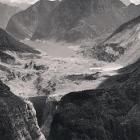On October 9, 1963, at 10:39 pm 260 million cubic meters of rock broke off from the top of Monte Toc, on the border between Veneto and Friuli Venezia Giulia. It fell into the reservoir of the Vajont Dam, producing an enormous wave of at least 50 million cubic meters of water. The dam, completed in 1959 and one of the biggest in the world at the time, did not suffer any serious damage. However, flooding destroyed several villages in the valley and killed almost 2,000 people. A third of the population of Longarone, the largest village downstream of the dam, perished.

The town of Longarone, Italy, before the landslide, 1963.
The town of Longarone, Italy, before the landslide, 1963.
Unknown photographer, 1963.
Courtesy of Vajont Survivor’s Committee.
Click here to view image source.
 This work is licensed under a Creative Commons Public Domain Mark 1.0 License.
This work is licensed under a Creative Commons Public Domain Mark 1.0 License.
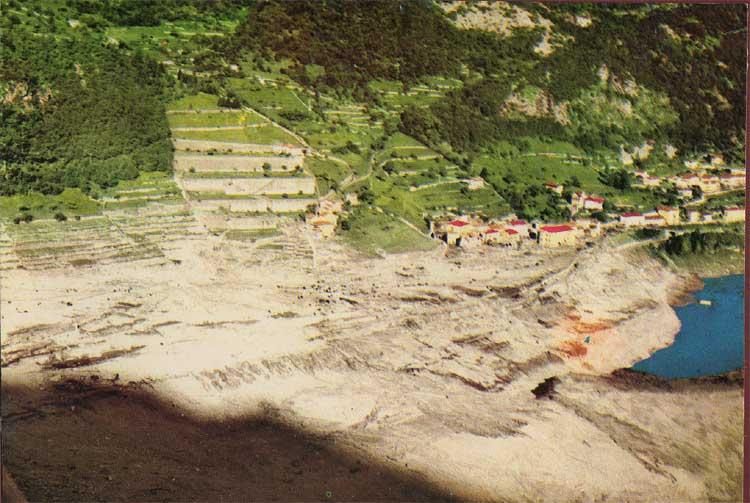
The town of Longarone after the dam was overtopped by a giant wave.
The town of Longarone after the dam was overtopped by a giant wave.
Unknown photographer, 1963.
Courtesy of the Vajont Survivor’s Committee.
Click here to view image source.
 This work is licensed under a Creative Commons Public Domain Mark 1.0 License.
This work is licensed under a Creative Commons Public Domain Mark 1.0 License.
Though the dam incorporated the latest technical expertise, it had been built without due consideration of geological reports, possible tectonic problems, local knowledge of the territory and Monte Toc’s connate instability.
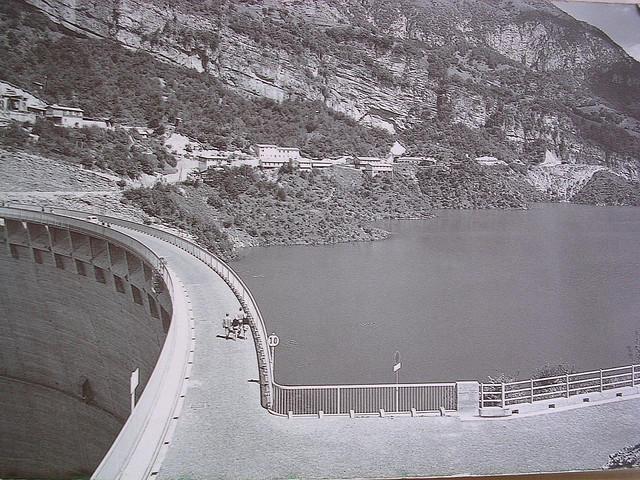
The Vajont Dam before the disaster (before 1963).
The Vajont Dam before the disaster (before 1963).
Photograph by Progetto Vajont “Io c’ero,” n.d.
Click here to view source.
 This work is licensed under a Creative Commons Attribution-NonCommercial-ShareAlike 2.0 Generic License.
This work is licensed under a Creative Commons Attribution-NonCommercial-ShareAlike 2.0 Generic License.
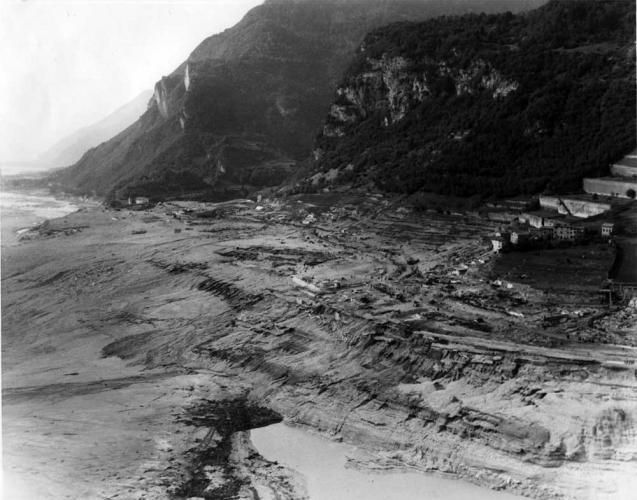
View of Longarone after the wave from the Vajont Dam (1963).
View of Longarone after the wave from the Vajont Dam (1963).
Photograph by U.S. Army (SETAF), 1963.
Click here to view image source.
 This work is licensed under a Creative Commons Public Domain Mark 1.0 License.
This work is licensed under a Creative Commons Public Domain Mark 1.0 License.
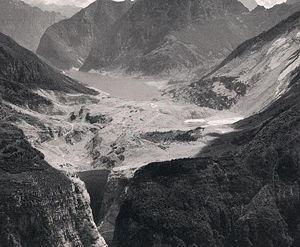
View of the Vajont reservoir after the landslide (1963).
View of the Vajont reservoir after the landslide (1963).
Photograph by USGS, 1963.
Click here to view image source.
 This work is licensed under a Creative Commons Public Domain Mark 1.0 License.
This work is licensed under a Creative Commons Public Domain Mark 1.0 License.
Already in 1960, shortly after completion, there were small landslides. The fear that Monte Toc would collapse was widespread in the area. Moreover, builders and managers had failed to observe soil conservation requirements and filled the reservoir well in excess of safety regulations. Finance-related concerns and a blind faith in development and technical expertise had eclipsed real consideration of environmental factors in the valley and of the threat to human life.
The disaster immediately became the subject of political wrangling in the mediascape. Conservative newspapers depicted the event exclusively as natural and unavoidable: the dam and its builders were not responsible since the dam had resisted the impact of the landslide. Opposition newspapers alluded to the fact that the disaster could have been avoided and that the main cause was human error.
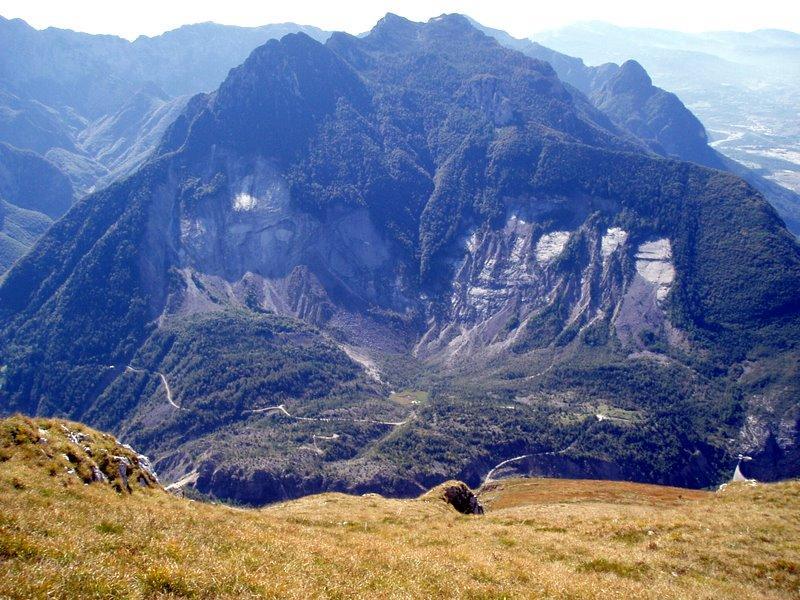
View of the detached landslide at Mount Toc.
View of the detached landslide at Mount Toc.
Photograph by Giuseppe Rossi, 2007.
Click here to view image source.
 This work is licensed under a Creative Commons Attribution-NonCommercial-NoDerivs 2.0 Generic License.
This work is licensed under a Creative Commons Attribution-NonCommercial-NoDerivs 2.0 Generic License.
How to cite
Hardenberg, Wilko Graf von. “Expecting Disaster: The 1963 Landslide of the Vajont Dam.” Environment & Society Portal, Arcadia (2011), no. 8. Rachel Carson Center for Environment and Society. https://doi.org/10.5282/rcc/3401.
ISSN 2199-3408
Environment & Society Portal, Arcadia
 This work is licensed under a Creative Commons Attribution-NonCommercial-ShareAlike 3.0 Unported License.
This work is licensed under a Creative Commons Attribution-NonCommercial-ShareAlike 3.0 Unported License.
2011 Wilko von Hardenberg
This refers only to the text and does not include any image rights.
Please click on the images to view their individual rights status.
- Merlin, Tina. Sulla pelle viva: come si costruisce una catastrofe: il caso del Vajont. 4th ed. Caselle di Sommacampagna (Verona): Cierre, 2001.
- Paolini, Marco. The Story of Vajont. Bordighera: Boca Raton Fla., 2000.
- Reberschak, Maurizio, and Ivo Mattozzi, eds. Il Vajont dopo il Vajont : 1963–2000. Venice: Marsilio, 2009.
- Reberschak, Maurizio, ed. Il grande Vajont. Sommacampagna (Verona): Cierre Ed., 2003.
- Saba, Andrea Filippo. “Le dighe.” Passato e Presente 82 (2011): 32–37.



